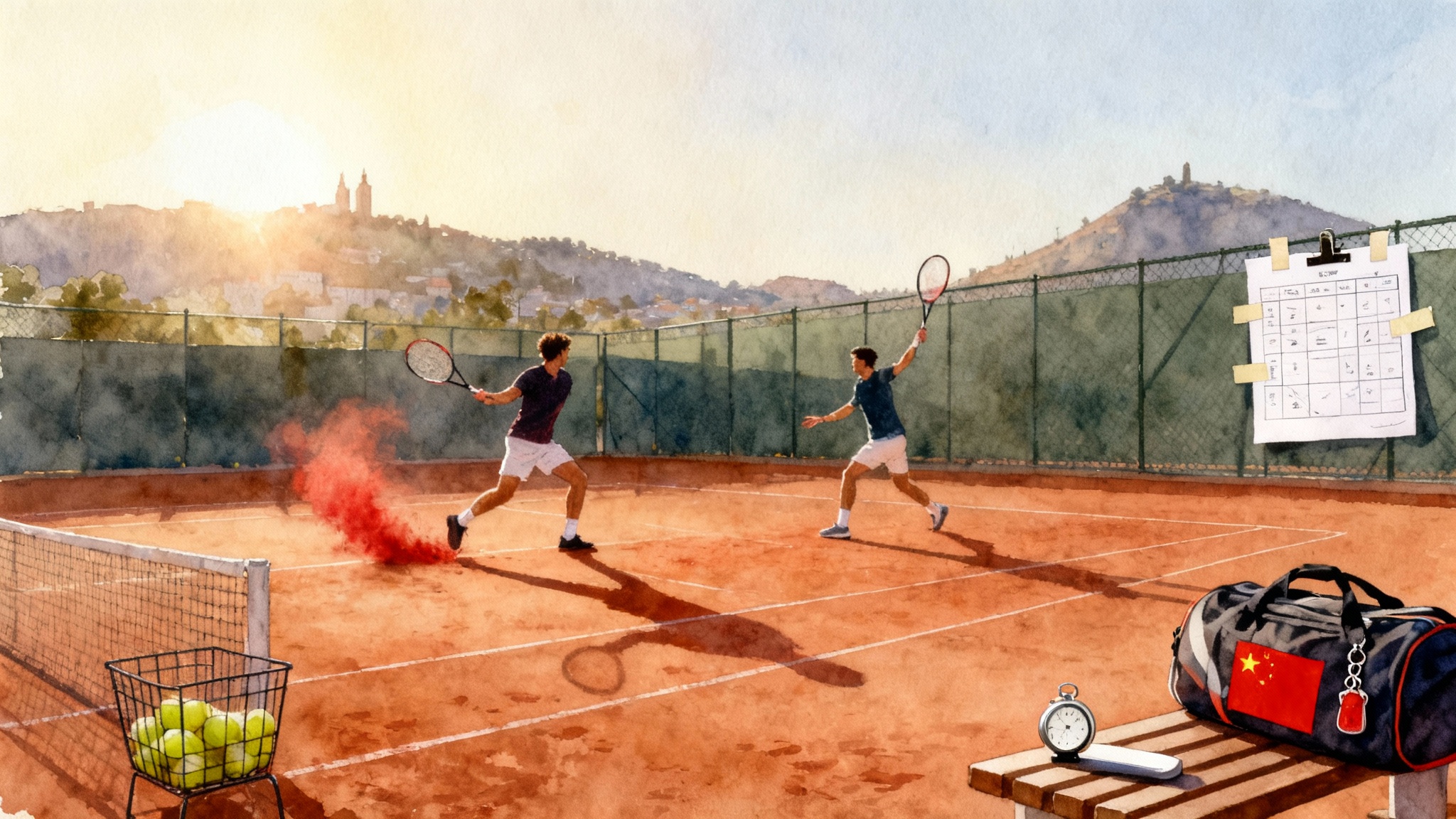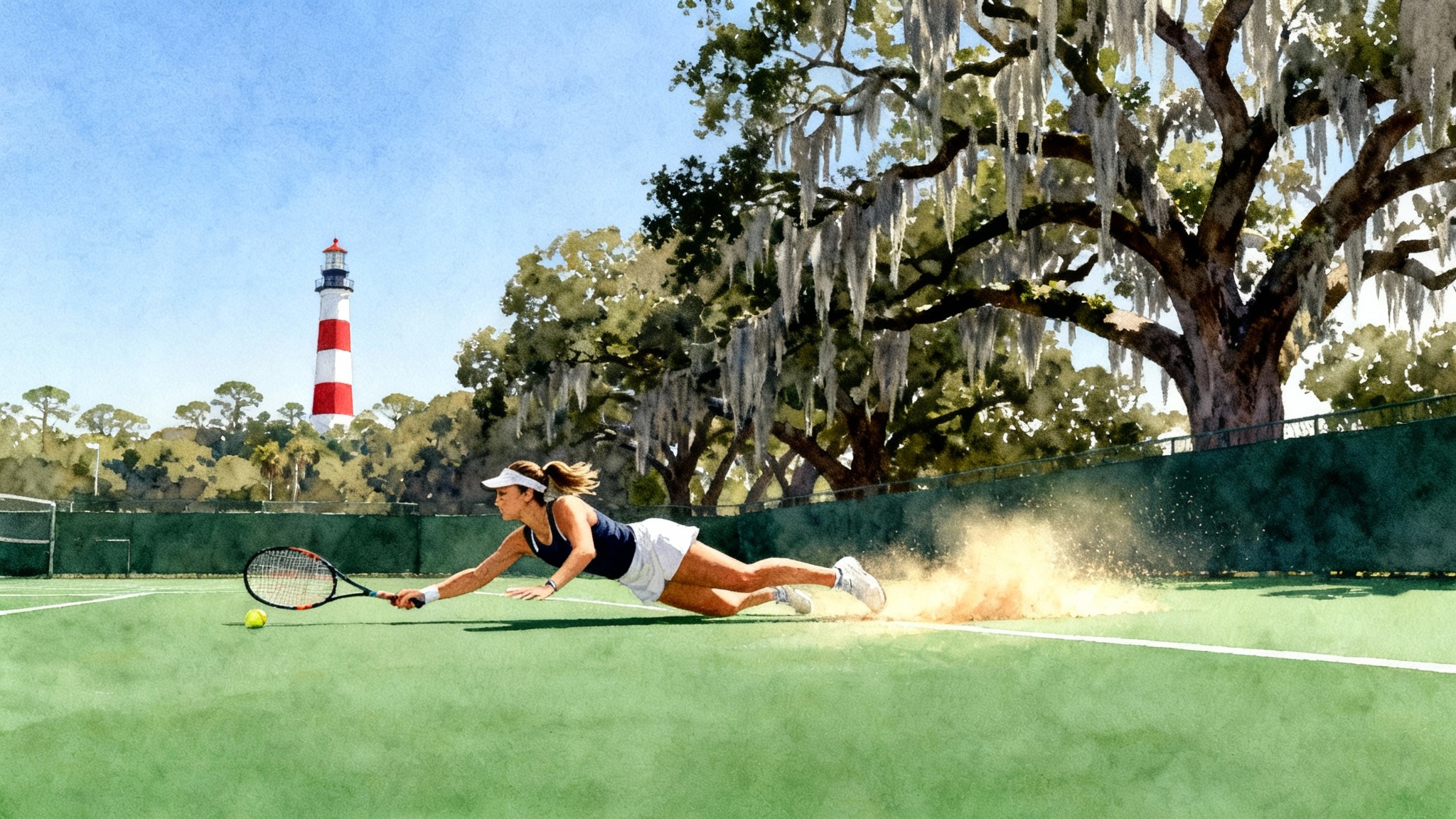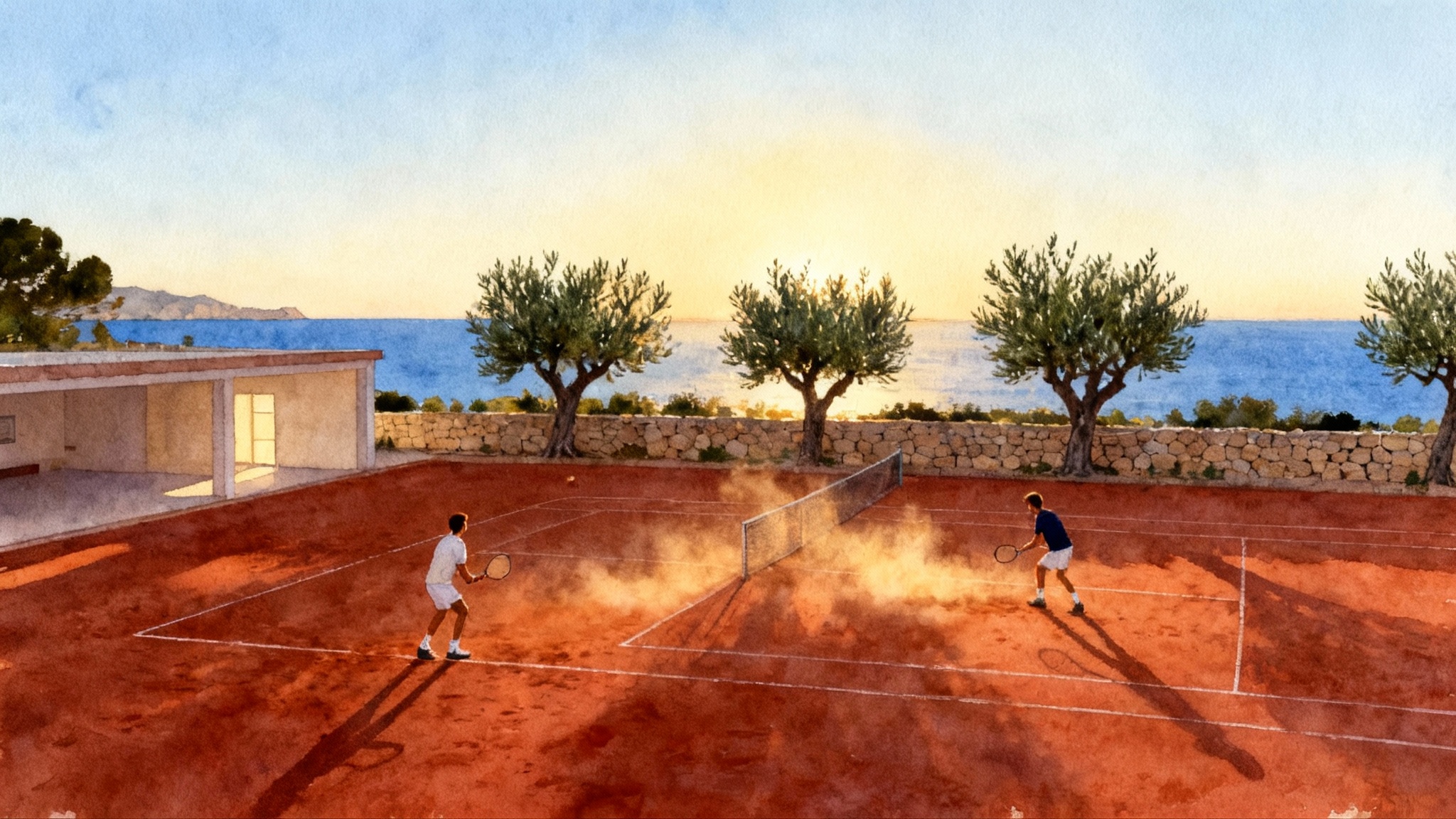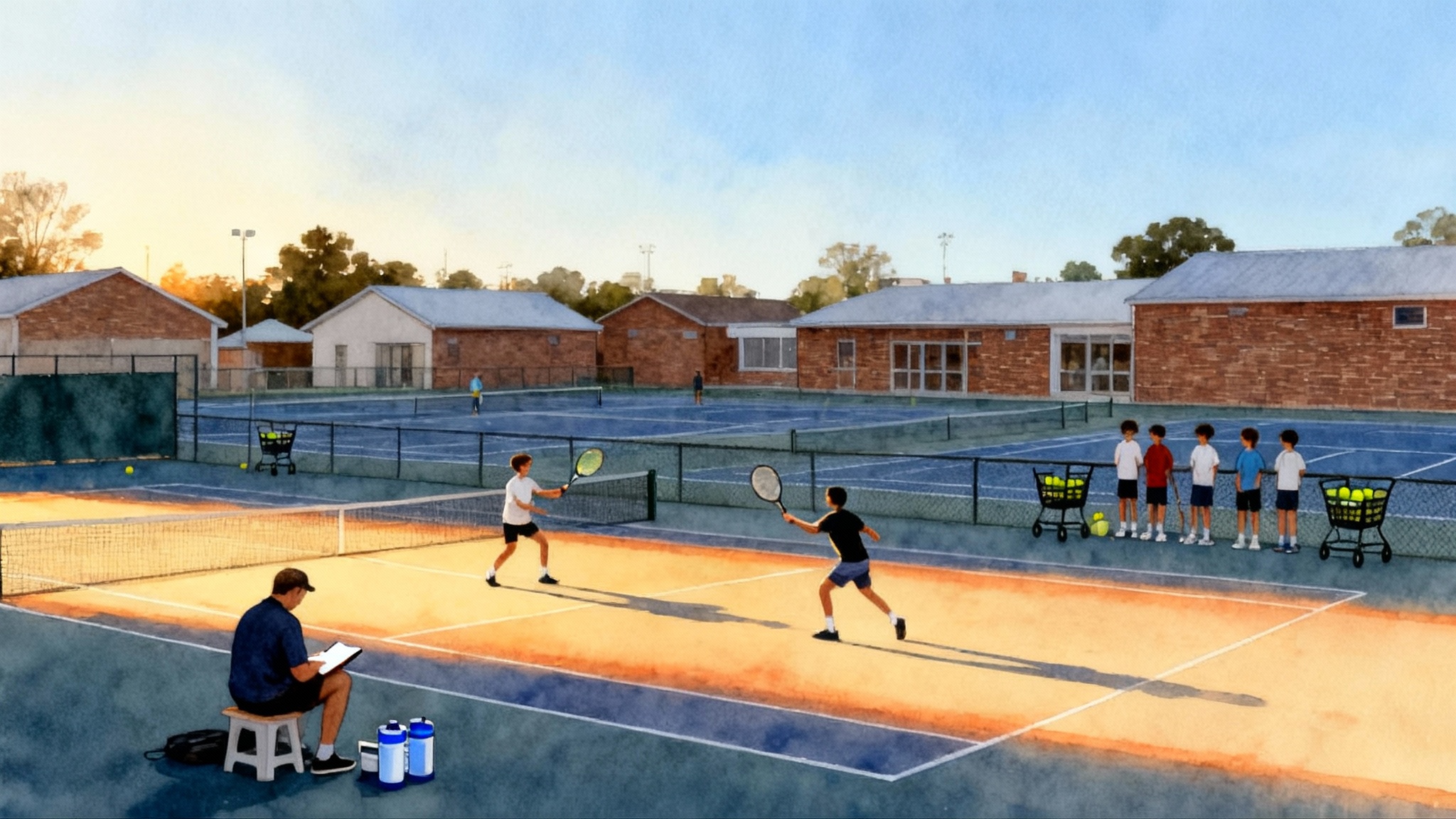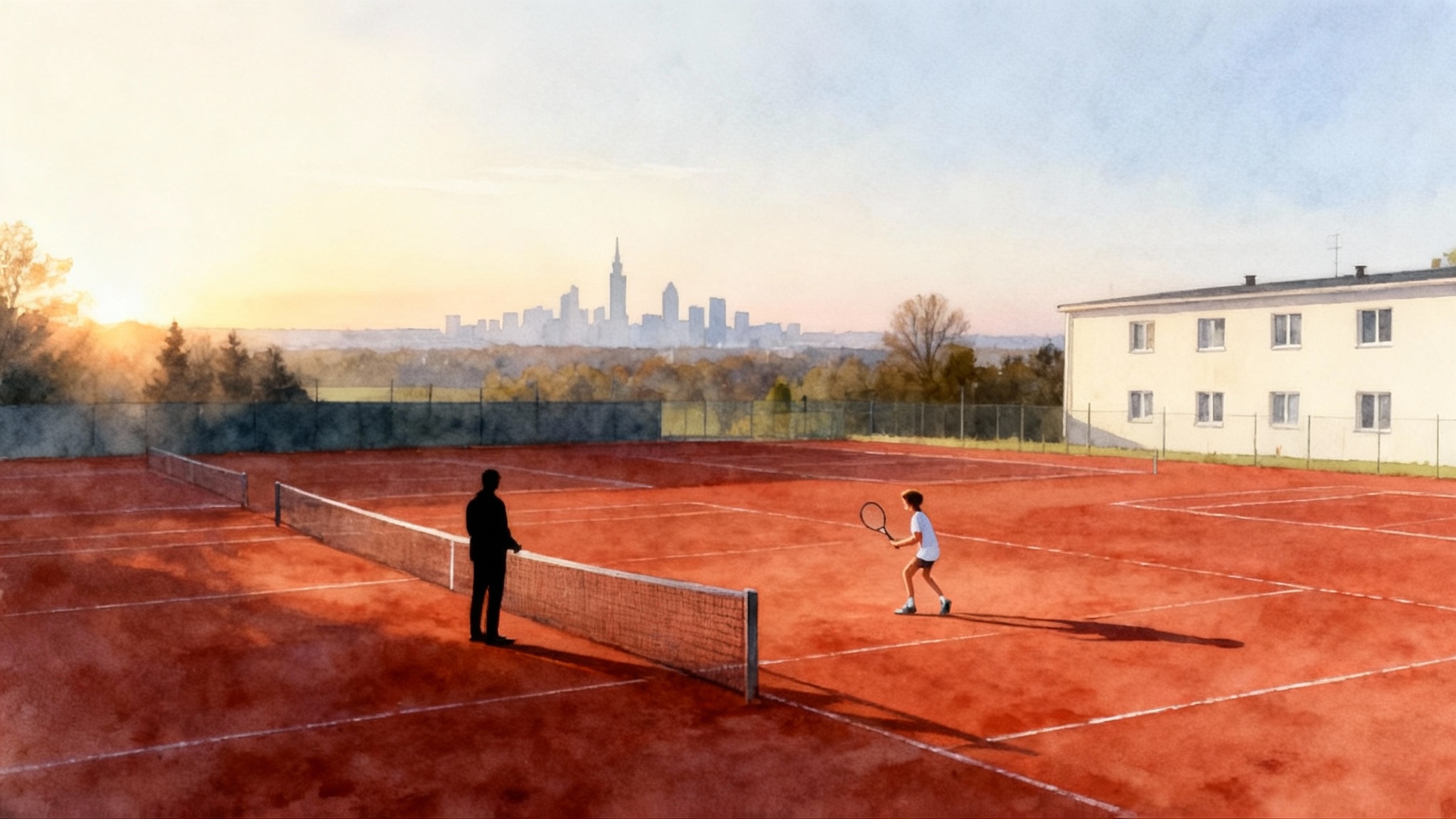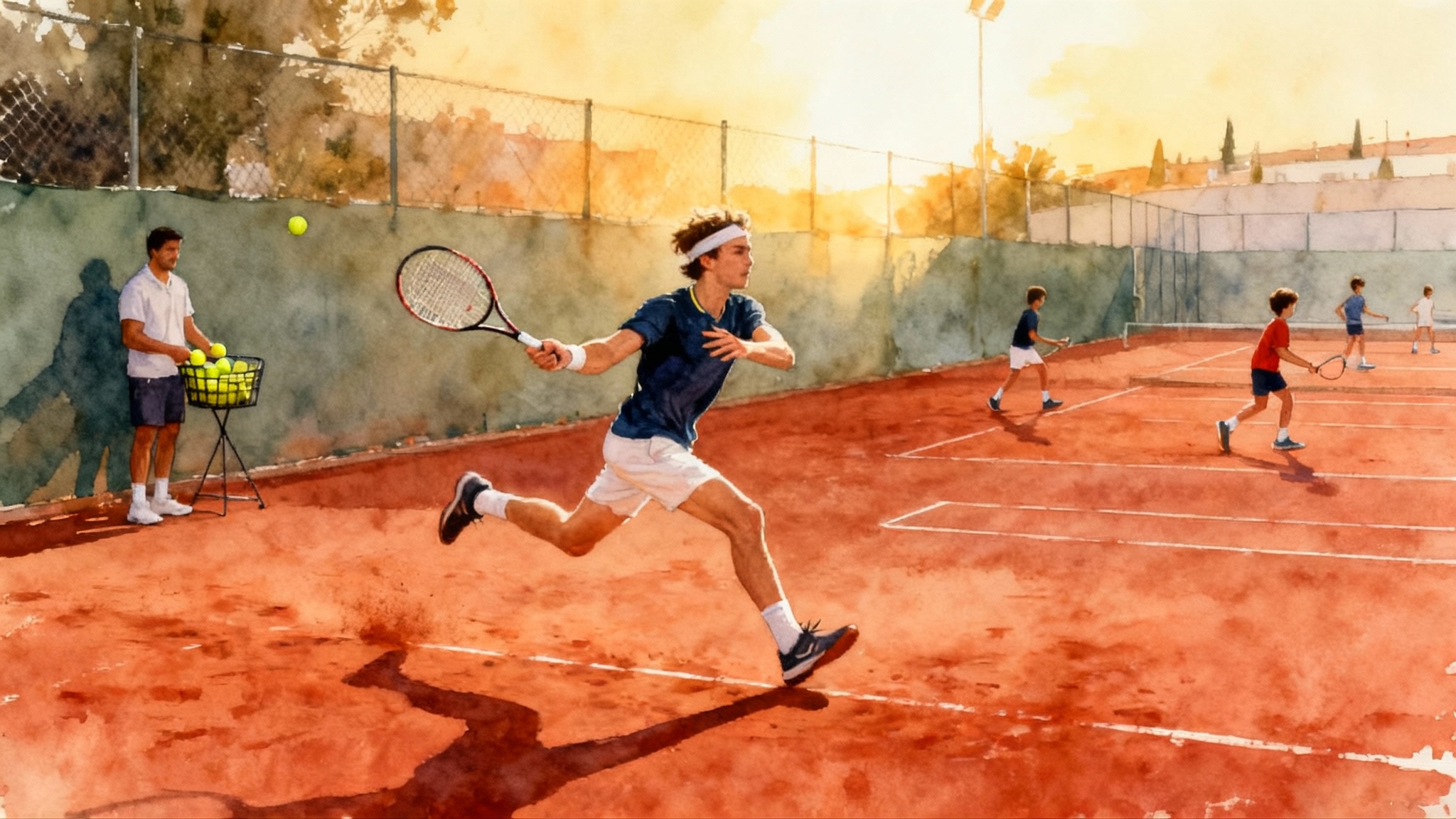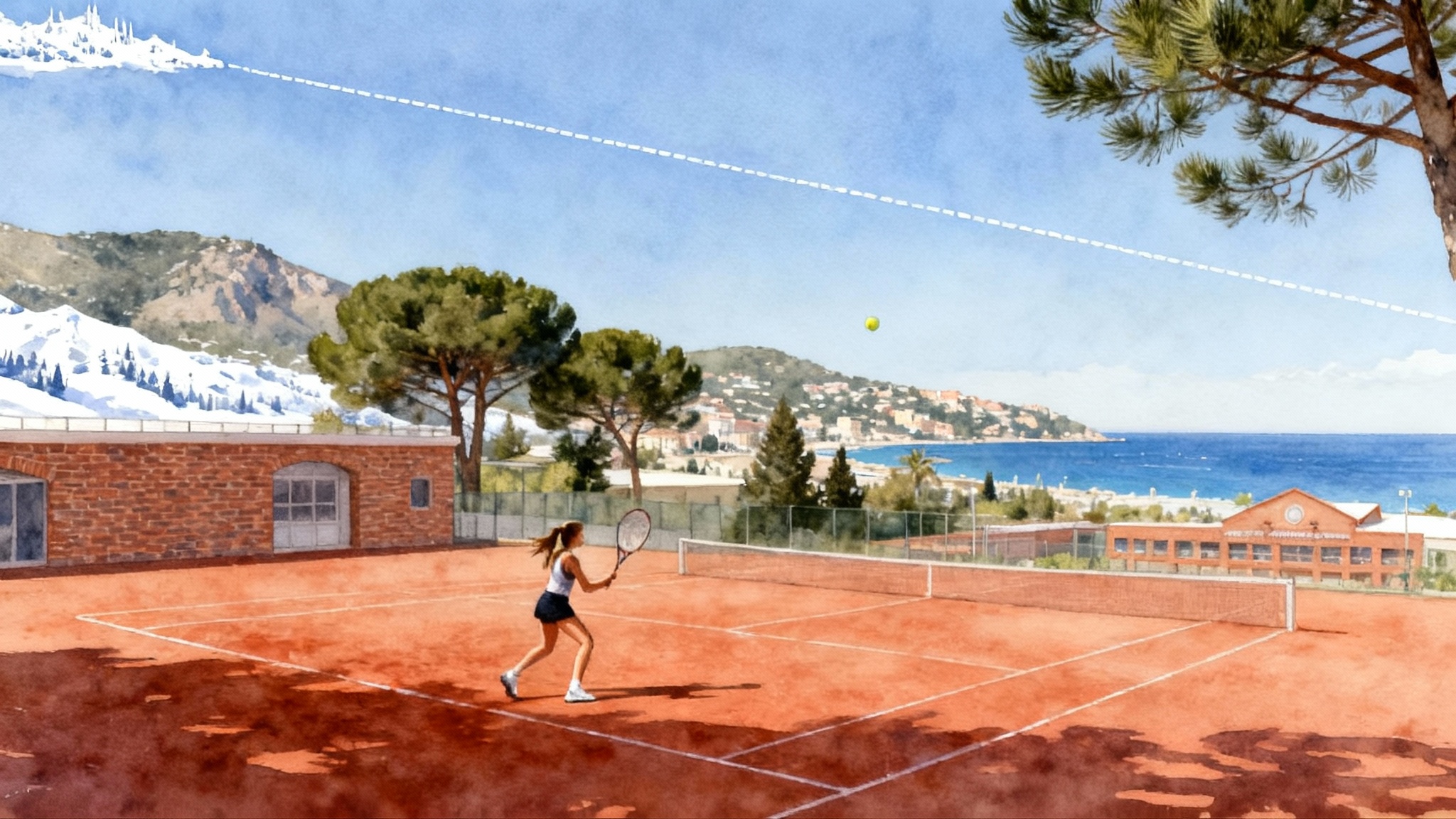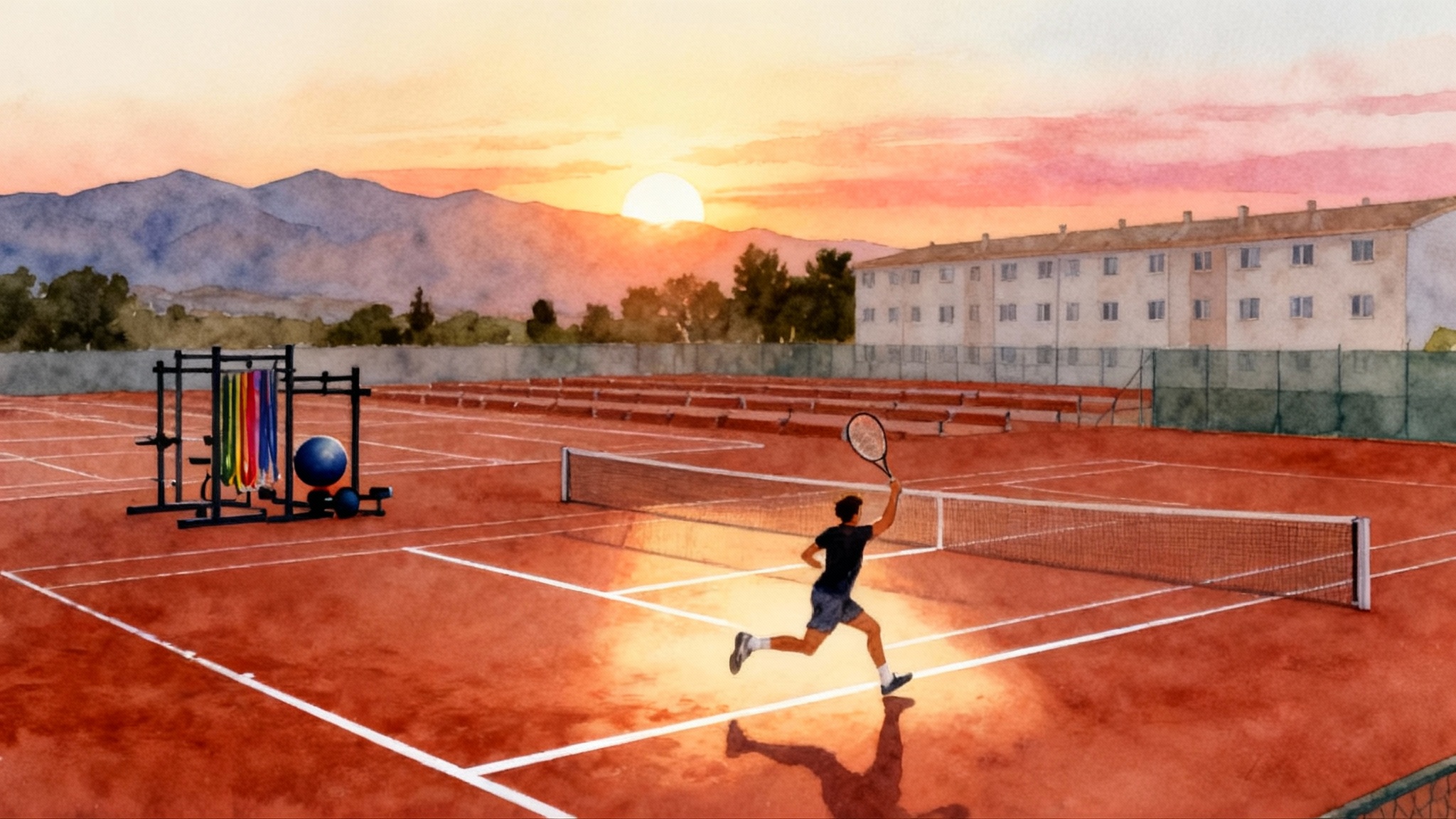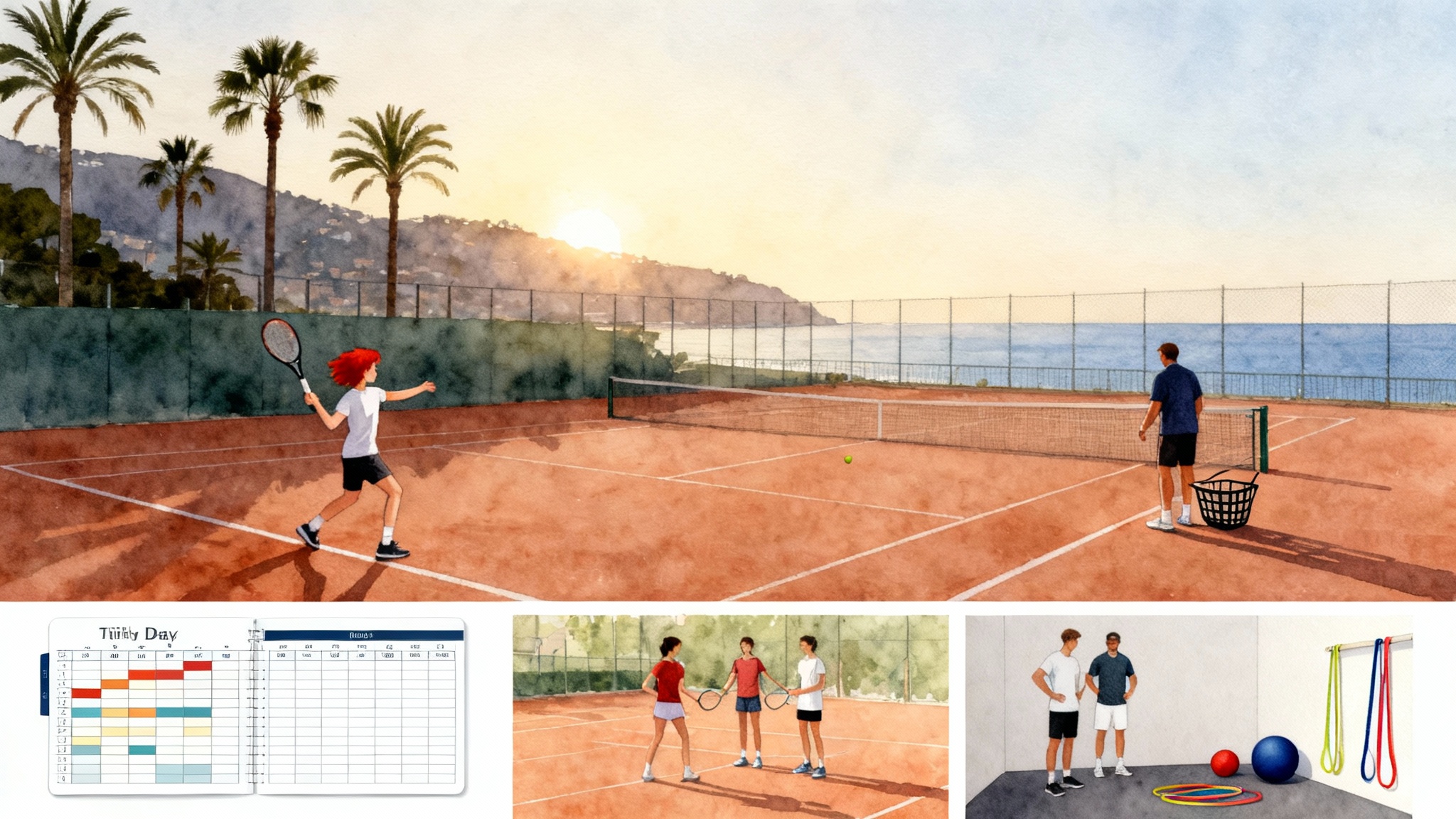Andreeva’s Elite Tennis Center path from Siberia to WTA 1000
Mirra Andreeva left Sochi for Cannes in 2022 to join Jean-René Lisnard’s Elite Tennis Center. Daily pro sparring, compact training groups, and a smart shift to Conchita Martínez set the stage for her 2025 Indian Wells breakthrough.
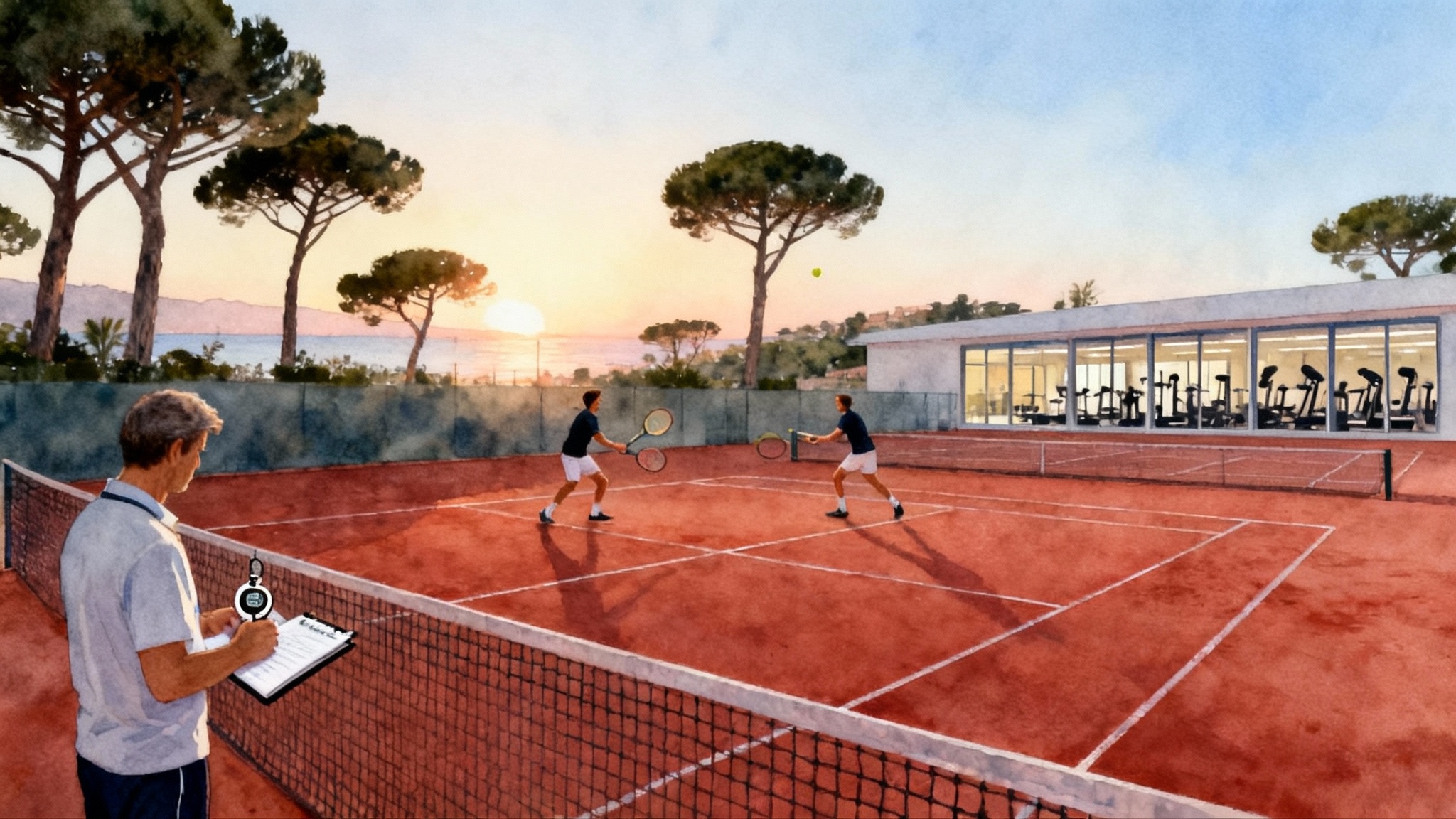
From Krasnoyarsk cold to Côte d’Azur clarity
Every great tennis story has a decisive mile marker. For Mirra Andreeva, it was a family decision in early 2022 to leave Sochi and base in Cannes at Jean-René Lisnard’s Elite Tennis Center. There, alongside coach Jean‑Christophe Faurel, she trained in an environment built for pros, not prospects. The move compressed years of development into months. It also connected the Andreeva family with a system that runs on clear standards, compact groups, and daily problem solving against experienced hitters. That change of address is the through line from Siberian beginnings to a Women’s Tennis Association contender.
By the time she reached major stages, that choice looked obvious. But it was not a leap of faith. It was an audit. The family asked a simple question: where can Mirra face tour‑level questions every day? The answer was Cannes. As the French federation’s official tournament site summarized, Mirra and her sister Erika relocated at the start of 2022 to train at Elite Tennis Center with Lisnard and Faurel, and to live in a schedule that mirrored the pro tour rather than junior tennis. Based in Cannes with Lisnard and Faurel.
Families comparing development models can also study how compact, pro‑led systems shaped other champions, like the Sinner’s Piatti Academy path and the Equelite’s Alcaraz blueprint.
What makes Elite Tennis Center different
Elite Tennis Center is not a tourist academy. Its purpose is narrow. The center was founded to build pros who can win matches on Monday at a 15,000 seat stadium and then solve a new opponent on Tuesday. That purpose shows up in how training is organized.
- Two players per court per coach is the default. This is small enough to correct footwork patterns in real time and large enough to simulate point patterns with variety. It is the opposite of the four to six player carousel you sometimes see in camp settings.
- Pro hitters are normal. Training blocks regularly include touring professionals who reside on or pass through the Riviera. That means a 90 minute session can include speed, deception, and problem solving that juniors typically see only in competition.
- Complete infrastructure under one roof. Tennis time, physical preparation, and physio live inside the same plan. That makes recovery an input, not an afterthought.
If you are a parent, imagine a language school where a student learns grammar for 30 minutes, then debates daily with native speakers at full speed. That is the Cannes advantage. Input is relevant, repetition is dense, and feedback lands immediately.
For families scouting the region, the Nice Tennis Academy profile offers a nearby, competition‑driven option with small groups and integrated work.
Why daily pro sparring changes the slope of improvement
Many families equate more balls with more progress. What lifted Andreeva was not more balls. It was better questions per minute.
- Pace and length. Pro hitters add depth and weight to the ball. Juniors must anchor the first step and manage height over the net. That demands stable grips and a compact swing. With pros, every loose contact gets punished. That compresses the learning timeline.
- Disguise. Touring players hide intentions with tempo changes. Juniors must read shoulders and hips, not just racquet face. This is video‑game perception training at full speed.
- Scoreboard pressure. Pro sparring partners keep score for real. The next 10 minutes often become a mini‑tiebreaker, with consequences inside the block. This turns drills into decisions, and decisions into habits.
Mechanism matters. Think of improvement as compounding interest. Daily sparring sets the interest rate higher, because each ball asks more of decision‑making, spacing, and recovery. If a traditional session yields two or three meaningful tactical adjustments, a session against a tour‑level hitter can yield eight or nine. Over a season, that gap turns into ranking points.
Compact groups, compounding gains
The difference between two players per court and a busy carousel is not cosmetic. It is math.
- Contacts. In a 90 minute block, a compact group raises high‑quality contacts by hundreds per week. That volume, at useful intensities, locks in the motor patterns that travel under stress.
- Corrections per minute. With one coach and two players, the loop from error to feedback to trial shrinks to seconds. A loose shoulder on the open‑stance backhand gets a cue, a shadow rep, and a live ball fix within the same rally.
- Accountability. Fewer bodies means fewer hiding places. Players feel seen. That pressure is productive, especially when the session is scored.
At Elite Tennis Center, compact groups also unlock variety. Two players can run serve plus one sequences that mirror match play. They can insert a left‑handed hitting session, specific to returning slider serves out wide on the deuce side. The structure makes specificity easy.
The handoff: from academy development to tour‑level coaching
Development pathways that work have a baton pass. For Andreeva, the baton passed from academy‑centered training to a tour‑level coaching team as she approached the top tier. That included adding a former Wimbledon champion, Conchita Martínez, to lead the day‑to‑day on tour.
This shift is not a repudiation of academy work. It is a response to new demands. The tour compresses weeks into flights, scouting, and recovery budgets. A traveling coach manages the match‑to‑match plan, communicates with fitness and physio, and keeps the player present. The academy becomes a base camp for deeper blocks and rebuilds between swings.
The outcome spoke loudly. Andreeva walked through Dubai, then six weeks later in March 2025 she won Indian Wells by defeating the world number one in the final. That winning streak did not appear on its own. It grew out of the habits and problem‑solving built in Cannes, then sharpened under Martínez on the road. Andreeva topples the world number one to win Indian Wells.
When to relocate: a checklist for families
A move across a continent is disruptive. Use criteria, not vibes.
- Competitive ceiling. Your player dominates regionals and wins at the next level up without their best day. If the only true tests are two flights away, the daily training base is too easy.
- Quality of sparring. Ask yourself a blunt question: can my player face two tour‑level questions per training day right now? If not, relocation will help only if the new base guarantees that exposure.
- Group size. If you cannot get to two players per court per coach for most tennis hours, improvement will stall at the margins that decide pro matches.
- Integrated performance services. The new base must control fitness, recovery, and tennis plans inside one calendar. A strong physio plan and a conservative return‑to‑load protocol prevent the injuries that pull juniors out of the calendar.
- Education plan. Boarding, tutoring, and language support must be real, not decorative. An academic plan buys training time because it reduces household stress.
- Test week first. Any reputable center will invite a trial week. Treat it like a tournament. Does your player compete well in the sessions, then recover and repeat?
Why pro sparring is worth paying for
Families sometimes balk at the premium for pro sparring. Evaluate it like a startup cost with clear returns.
- You are buying accurate problems. A pro hitter reveals whether the forehand can live at 3,000 revolutions and whether the backhand can handle a heavy crosscourt that jumps. That answers questions you would otherwise discover in a painful first‑round loss.
- You are buying speed of feedback. Against pros, coaches can isolate a real breakpoint pattern, fix it in the next block, and test it against the same caliber the next morning.
- You are buying confidence that travels. If a junior can hold serve in Cannes against a top‑100 returner in practice sets, the court in Stuttgart or Indian Wells feels familiar.
How to structure it:
- Book two to three pro‑level sessions per week during the base phase. Protect at least one day per week for lighter work and feel drills.
- Do not chase only one look. Mix hitters and include a left‑hander monthly. Insert a big‑serve block before hard‑court swings and a heavy‑topspin block before clay.
- Track it. Keep a sparring log with serve points won, return points won, and errors by height zone. Progress should show up as boring increments.
From academy to tour: building the traveling team
The traveling setup does not have to be a nine person caravan. It must be coherent.
Core roles:
- Lead coach. Responsible for match planning, video review, and day‑to‑day decisions. Owns the post‑match debrief and the weekly training menu.
- Fitness coach or remote program. Writes the microcycle and communicates with the lead coach. If remote, schedule weekly live check‑ins and quarterly in‑person weeks.
- Physio access. On call during tournament weeks, with a prehab checklist and a return‑to‑play protocol.
- Performance analyst. This can be part‑time. The job is to consolidate scouting and deliver two or three usable cues per opponent.
How to connect the tour team with the academy base:
- Quarterly return blocks. Two to three weeks for technical upgrades that are hard to do on the road, like forehand backswing simplification or serve toss height consistency.
- Data handshakes. Share match reports and practice logs both ways. Everyone should know the target metrics for serve plus one and return plus one.
- Clear responsibility splits. The academy leads long‑term technical progression. The tour coach leads weekly match execution. Both agree on the calendar and peak targets.
For a different blueprint that blends club roots and academy science, see Sinner’s Piatti Academy path.
A sample 10 month roadmap for a rising 15 to 17 year old
Month 1 to 2: Trial and baseline
- One trial week at the target center. If offered, add a second week after a short break. Run a small test event nearby.
- Technical audit. Identify two technical anchors to keep and two to change. For example, keep the two‑handed backhand shape and change the forehand spacing with a three‑ball depth ladder.
Month 3 to 5: Build the base
- Two players per court per coach for most tennis hours. Insert three pro sparring blocks each week.
- Fitness emphasis on acceleration and repeat sprint ability. Two lower‑body sessions and one movement quality session per week. Integrate overhead medicine ball throws for serve rhythm.
- Play one tournament every four to five weeks to test progress.
Month 6: First mini peak
- Schedule a three week run of events where you can play into a draw. Do not chase only the biggest badge. Choose where match wins are realistic.
- Traveling coach covers scouting and post‑match debriefs. Video two matches and one practice set for review.
Month 7 to 8: Rebuild
- Return to base for two to three weeks. Tidy the forehand under stress. Refine the second serve target windows. Reset sleep and nutrition habits.
Month 9 to 10: Second mini peak
- Target an event with fast courts, then a slower event, to force tactical flexibility. Protect practice quality on travel days with 45 minute feel hits.
- End with an honest review. If ranking and match‑quality metrics moved in the right direction, re‑commit. If not, adjust the mix of sparring, group size, and traveling support.
Budgeting and practicalities
- Travel blocks. Budget four to five two week road swings per year at first. Shorter, better planned swings are more productive than a long grind.
- Housing. If the academy offers boarding, ask to see the weekly schedule. Curfew, study halls, meal plans, and laundry sound trivial until they are not.
- Language and school. Secure tutoring before the move. Language friction should not get in the way of training clarity.
- Health. Insist on prehab built into the weekly plan. A good physio program is cheaper than a three month layoff.
Warning signs that a move will not help
- The center cannot guarantee small groups most days. If your player regularly shares a court with three or more peers, the math works against you.
- Pro sparring is rare or performative. You see a pro once for photos, not three times a week for decision‑heavy sets.
- No lead coach. If you cannot point to the person accountable for your player’s plan, there is no plan.
- Travel plan is a mystery. The academy should present a calendar and a budget outline for the next six months.
What Andreeva’s rise teaches, in one line each
- Relocate for questions, not for palm trees. Choose the base that asks the right questions every day.
- Pay for density. Two players per court per coach beats volume with six player rotations.
- Make pro sparring normal. Book it like a non negotiable meeting.
- Pass the baton. As results scale, shift to a tour‑level coaching team that owns match‑to‑match execution while the academy remains the base for upgrades.
- Keep a scoreboard. Measure serve plus one and return plus one outcomes each week. Let numbers guide adjustments.
The result that made the method visible
In March 2025 at Indian Wells, Andreeva lifted her first trophy on one of the game’s grand outdoor stages, taking down the world number one in the final to secure a second straight Women’s Tennis Association 1000 title of the season. The headline was about a teenager winning in the desert. The subhead was about years of good decisions. The blueprint came from a center that treats juniors like pros and from a touring coach who converts habits into wins under stadium lights. It is a template that families can borrow without copying every detail. The details matter less than the principles.
A smart way to act now
If you are considering a move, run this three step test over the next six weeks.
- One trial week at a high performance center
- Expect two players per court per coach at least 70 percent of the time.
- Ask for pro sparring three times that week. If they cannot make that happen, it will not happen when you enroll.
- Grab a printed sample week. It should show tennis, fitness, and recovery as parts of the same plan.
- Two tournaments in six weeks
- Choose one event where your player can win a round and one where they are an underdog. Film both. Compare patterns under pressure.
- After the second event, ask the prospective lead coach to present a two month plan that addresses the film. Look for specificity.
- One family meeting with numbers on paper
- Lay out travel days, coaching days, and sparring commitments. You are building a budget of attention, not just money.
- Decide based on what you can guarantee, not on hoped for results.
If those three steps are aligned, the move will not feel like a leap. It will feel like the next thing.
Closing thought
Mirra Andreeva’s journey from Krasnoyarsk to Cannes to Indian Wells can appear like a rocket launch. In reality it is a well engineered climb. The family found an environment that matched ambition with structure. Coaches used compact groups to turn small corrections into daily habits. Pro sparring turned practice into match ready decisions. Then a tour‑level coach converted that base into week after week execution. Families do not need a miracle to follow that path. They need a base that asks the right questions and a team that listens to the answers.
